Get PeakVisor App
Sign In
Search by GPS coordinates
- Latitude
- ° ' ''
- Longitude
- ° ' ''
- Units of Length

Yes
Cancel
Share ×

Scan the QR code and open PeakVisor on your phone
❤ Wishlist ×
Choose
Delete
Known for its stunning fjords, beautiful coastal landscapes, and rugged mountains, parc national du Fjord-du-Saguenay (Saguenay Fjord National Park) is a provincially protected area located in central Quebec, Canada near the Saguenay River. There are 35 named mountains in the park, the highest and most prominent of which is Mont Jacques-Lévesque (622 m/2,041 ft).
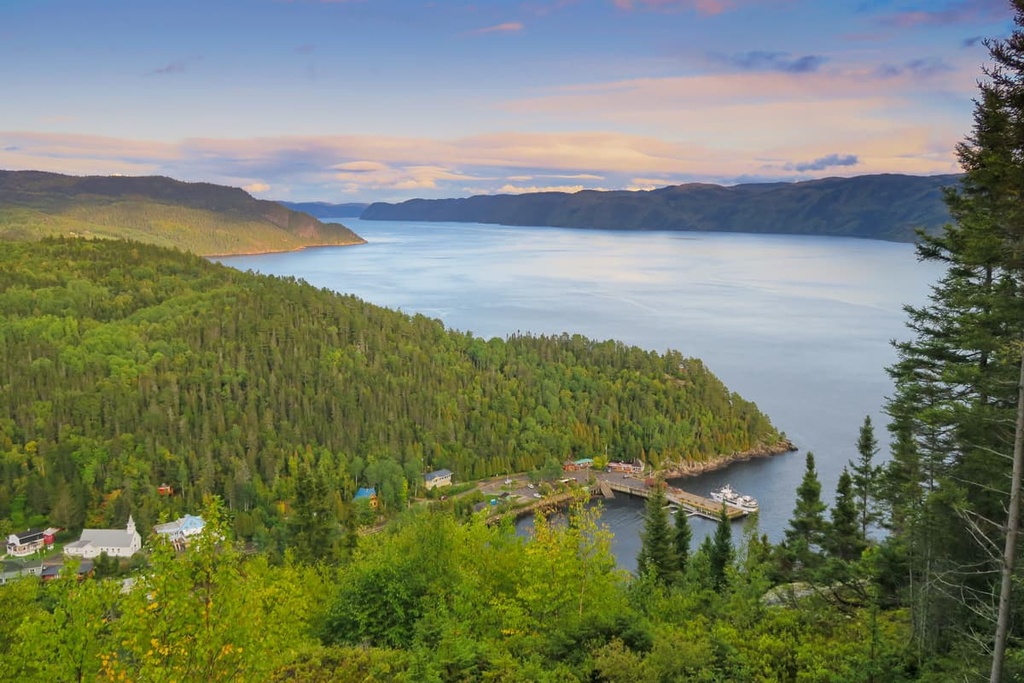
Parc national du Fjord-du-Saguenay (Saguenay Fjord National Park) is an outdoor recreation area and protected region located in the Canadian province of Quebec.
The park is situated in the southernmost part of the Côte-Nord region and it’s also partially located in the Charlevoix and Bas-Saint-Laurent regions. It’s nestled along the eastern part of the Saguenay River near the parc marin du Saguenay–Saint-Laurent (Saguenay-St. Lawrence Marine Park).
Saguenay Fjord National Park encompasses an area of 326.7 sq. km (123.3 sq. mi) near the city of Saguenay. As the park’s name suggests, it is home to a large fjord along the Saguenay River. In many ways, the park can be considered the land-based continuation of the Saguenay-St. Lawrence Marine Park, which includes the bulk of the Saguenay River before it empties out into the Saint Lawrence.
The park’s namesake fjord is approximately 105 km (65 mi) long and 2 to 4 km (1.2 to 2.5 mi) wide. It is an average of 210 m (690 ft) deep, though it reaches a maximum depth of 270 m (890 ft). Meanwhile, the cliffs that tower above the fjord reach a maximum weight of 350 m (1,150 ft), making the fjord a true wonder to behold.
Interestingly, even though the park is called a “national park” it is not managed by the federal government.
Rather, parc national du-Fjord-du-Saguenay is a national park of Quebec (parc national du Québec) protected under the Loi sur les parcs (Parks Act) of 1977 and managed by Sépaq (Société des établissements de plein air du Québec/Quebec Outdoor Establishments Company).
National parks of Canada, on the other hand, are protected under the Loi sur les parcs nationaux du Canada (Canada National Parks Act) of 2000 and are managed by Parks Canada.
There are three major regions within the park:
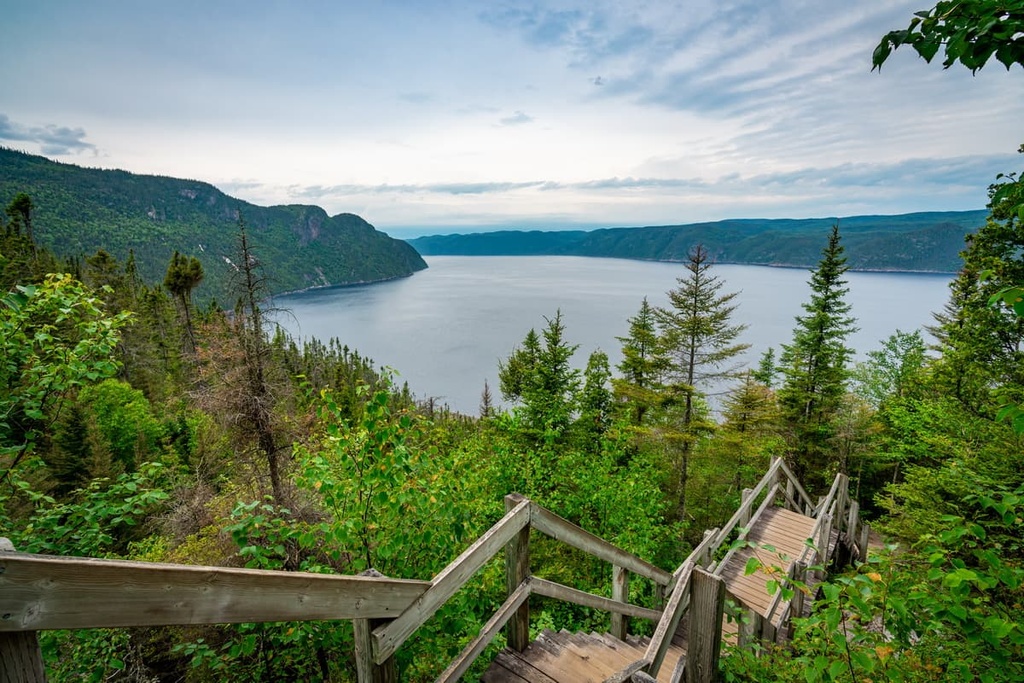
Additionally, parc national du Fjord-du-Saguenay is situated near a number of other popular outdoor recreation and protected areas. This includes:
Parc national du Fjord-du-Saguenay has a fascinating geologic history. The peaks in the park aren’t technically part of the Canadian Appalachians, which run to the east of the Saint Lawrence River. However, the park is situated in a geologically unique area called the Saguenay Graben.
The Saguenay Graben is a large rift valley in the heart of the Grenville Province, a large geomorphic area and tectonic region that covers a large portion of eastern Canada. This province extends from Lake Huron in the south all the way to Labrador in the north on the western side of the Saint Lawrence River. It is separated from the nearby Superior Craton by the Grenville Front.
The Grenville Province is considered to be the youngest part of the Canadian Shield, which is a large area of Precambrian rocks that forms the core of the contemporary continent of North America.
This province contains a mix of rock types as it was partially formed from a variety of accreted terranes. In the area around the national park, the primary rock types include gneisses, granites, and anorthosite, most of which date back to the Proterozoic. There are also some small outcroppings of shale and limestone in the region.
Meanwhile, the Saguenay Graben is effectively a large basin that encompasses much of the land around the Saguenay River. It’s unclear precisely how the graben formed; however, researchers believe that the opening of either the ancient Iapetus Ocean or the contemporary Atlantic Ocean caused the faulting that created the graben.
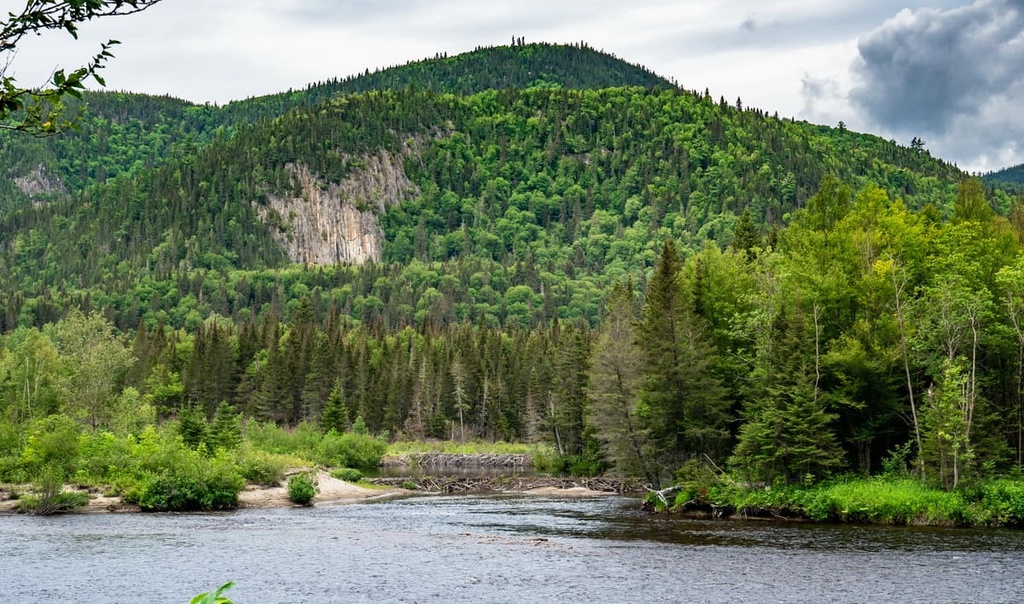
In more recent millennia, the Saguenay Graben was extensively glaciated. It was covered with ice for much of the Pleistocene. These glaciers helped to further carve out the graben, creating much of the topography that we see today.
Major peaks in the park include Mont Jacques-Lévesque, Petite montagne Blanche, Montagne Blanche, Montagne du Milieu, Montagne du Lac Otis, and Mount Adéla-Lessard.
Saguenay Fjord National Park boasts a diversity of landscapes and a rich community of flora and fauna.
Much of the park is heavily forested with trees such as red maple, white pine, golden birch, black spruce, Norway pine, Jack pine, and balsam fir dominating much of the landscape. There are also some sugar maples in the park near baie Trinité, but this is one of the northernmost outcroppings of the species on the continent.
With respect to wildlife, the park doesn’t disappoint either. Saguenay Fjord is home to a wide array of animal species, including Canadian lynx, moose, beavers, black bears, and even the occasional gray wolf.
The park’s waterways are also teeming with life. Common seals sometimes lounge on the banks of the Saguenay River while lucky visitors can occasionally see belugas, minke whales, fin whales, and even blue whales. There are also populations of Atlantic salmon, brook (speckled) trout, Arctic cod, and Greenland halibut found throughout the park’s waters.
The land that is now part of parc national du Fjord-du-Saguenay has been home to Indigenous peoples since time immemorial. In particular, the region is part of the ancestral homelands and traditional territory of the Huron-Wendat Nation (Nation Huronne-Wendat) and the
Innu First Nations.
People of European descent likely first visited the region that is now called Saguenay Fjord in the early 1500s. Jacques Cartier, a French sailor, is known to have made landfall in the region of Tadoussac in 1535. After his visit, Basque whalers and other French merchants and sailors frequently traveled to the Saguenay Fjord region, especially as the fur trade grew.
For a few decades, Tadoussac was the only major European-established seaport on the Saint Lawrence River. Just upriver from Tadoussac, the French built a trading post near what is now the city of Saguenay in the 1670s on the traditional lands of the Innu First Nations.
In the decades and centuries that followed, fur trapping and whaling were the primary industries in the region. But after the arrival of the Canadian National Railway in the region in the late 1890s, a new pulp, paper, and timber industry started to flourish along the fjord. The railway also helped to grow the region’s tourism industry.
By the early twentieth century, the region became a major population center for Quebec. As a result of this growing population and a rapid boom in the timber industry, the forests along the Saguenay River were quickly clear-cut and depleted.

Around the start of the 1970s, the government of Quebec decided to buy land around the river with the ultimate plan of protecting the fjord. In 1983, parc national du Saguenay was officially established to ensure that the region would always remain protected from further development. The park’s name officially changed to parc national du Fjord-du-Saguenay in 2011.
Saguenay Fjord National Park is a fantastic destination for hikers of all experience levels. Here’s a quick look at some of the most popular hiking trails in the park:
For a short and casual hike that’s great for the whole family to enjoy, consider the Mándres-à-Falaises. This 1.6 km (1 mi) loop trail starts and ends at the Fjord du Saguenay Discovery and Visitors Centre.
From the visitors center, this hike takes you on a relatively flat walk through the woods. It’s a particularly great place to see wildlife and it’s one of the best spots in the park for birdwatching if you only have a free afternoon. Plus, there are a few viewpoints along the way that offer good vistas of the fjord.
If you’re looking to see some spectacular waterfalls, the Des Chutes Trail is one hike that you won’t want to miss. The first waterfalls on the trail are located just 5 km (3.1 mi) round-trip from the trailhead, but if you’re feeling adventurous, you can continue for a total of 13.8 km (8.6 mi) of hiking to the summit of Montagne Blanche.
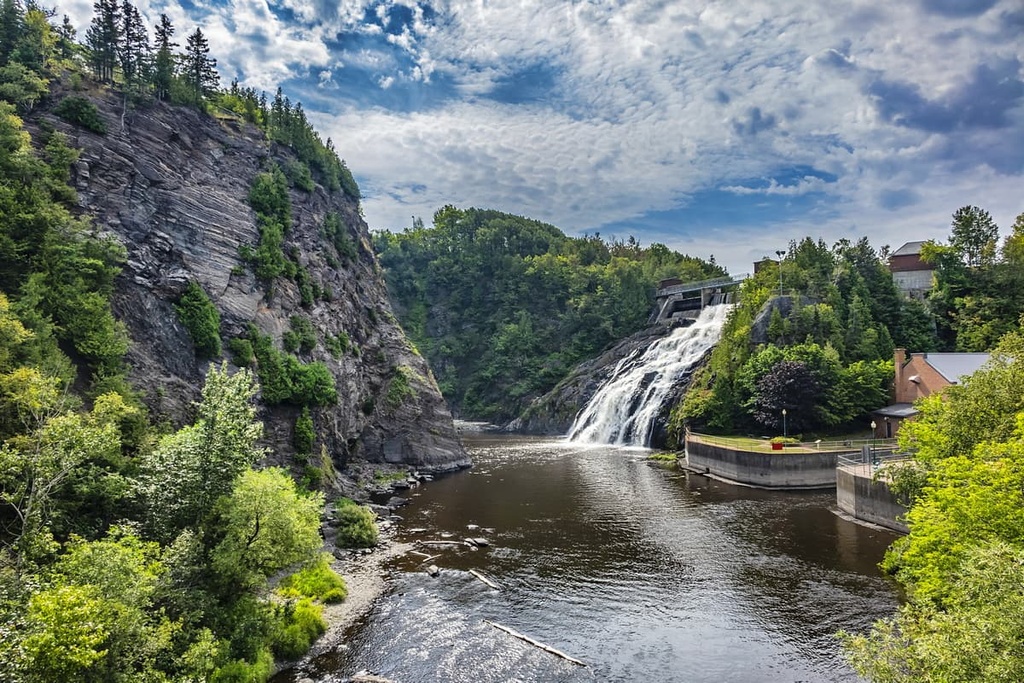
Although this hike doesn’t gain that much elevation, especially if you’re just going to the first waterfall, it does offer some nice views of the falls themselves. Occasionally, you can also catch a glimpse of the fjord as you hike along the trail.
Note that this trail is closed during the moose hunting season from early September to mid-October.
The Le Fjord Trail is a popular hiking route near the community of Tadoussac. This trail offers a number of different attractions, so you can make it as long or as short as you’d like.
To hike Le Fjord, you’ll begin at the parking lot in front of the fish breeding farm on Route 138. You can then hike either to Anse-à-la-Barque (3.6 km/2.2 mi round-trip), Mount Adéla-Lessard (6.6 km/4.1 mi round-trip), or to Cap de la Boule (11.7 km/7.3 mi one-way).
Note that you must reserve a shuttle bus if you want to hike all the way to Cap de la Boule. But regardless of where you stop along this trail, majestic views and serene forests await!
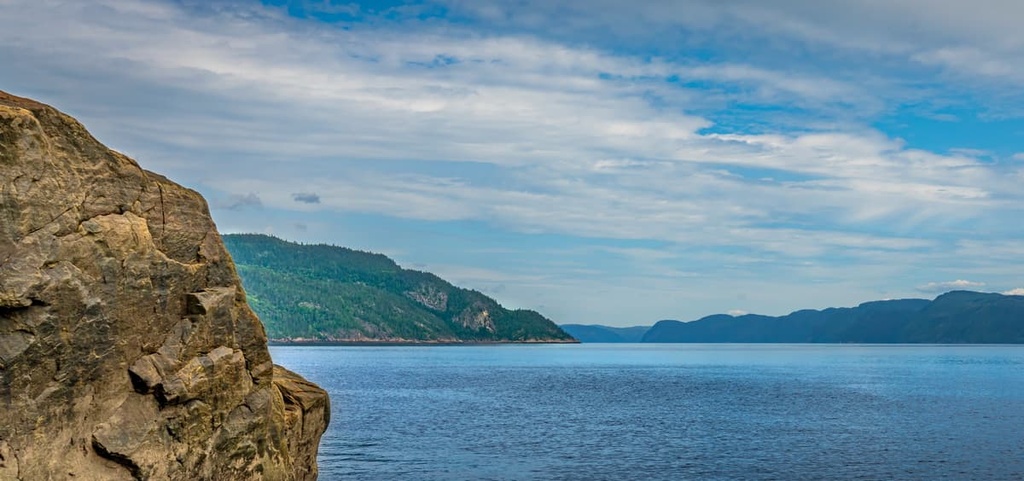
In the Baie-Éternité sector, the more adventurous among us can enjoy an afternoon of via ferrata along the Fjord du Saguenay. There are three via ferrata routes available in the park, each of which offers a different experience for visitors to enjoy. They all climb high up on the cliffs overlooking the fjord, providing exceptional views of the region.
The three via ferrata routes available in the park include:
Note that the via ferratas in Quebec national parks are not open-access, like in much of the Alps. Rather, the via ferrata in the park are only available via guided excursion, which you should book ahead of time.
After booking your via ferrata excursion, you’ll meet at the Fjord du Saguenay Discovery and Visitors Centre at least 30 minutes before your excursion time. You need to come prepared with a small backpack that contains spare clothing, sunscreen, a snack, and some water. The park will provide all required safety equipment, including a harness, helmet, and tether.
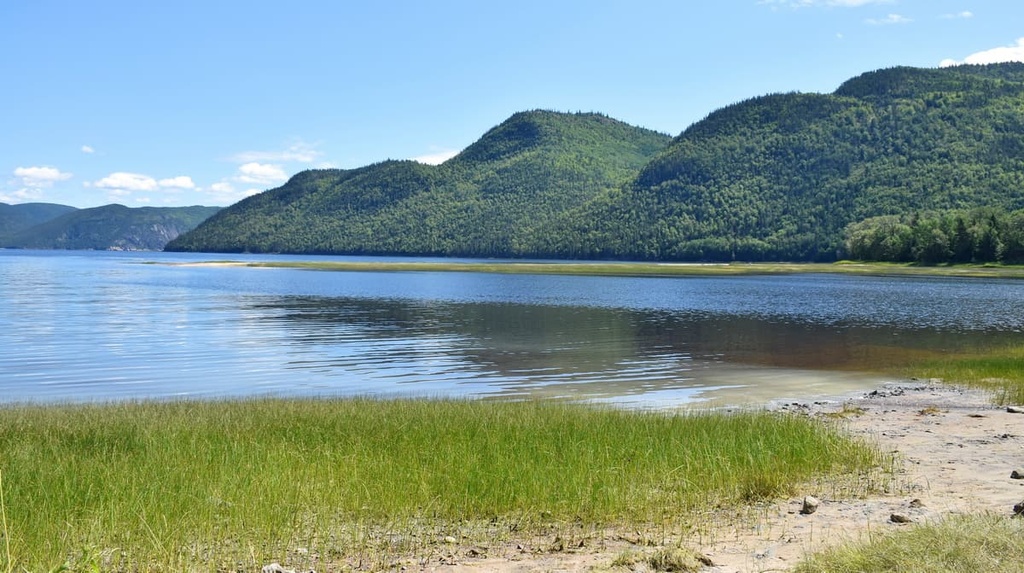
In addition to hiking, Saguenay Fjord National Park offers a whole host of other activities for visitors to enjoy. Some of the most popular activities include:
Visitors to Saguenay Fjord National Park have a number of different accommodation and camping options to choose from during their trip. Here are some of the best ways to spend the night in parc national du Fjord-du-Saguenay.
Backcountry camping is allowed throughout the national park, so long as campers follow a few regulations.
All backcountry campers in the park are required to have a permit for their trip. You can request a permit for trips of 1–8 nights in lengths and you can have a group size of 1–8 campers (minimum of 3 campers recommended). You’re also required to respect the principles of Leave No Trace when you’re in the park.
Campers can either pitch a tent on one of the park’s established tent platforms or they can stay the night in a hut or lean-to. If no tent platform is available, you can generally place a tent anywhere you want on a durable surface so long as it is at least 1 km (0.6 mi) from an existing trail, campground, hut, or shelter) and 60 m (200 ft) from a body of water.
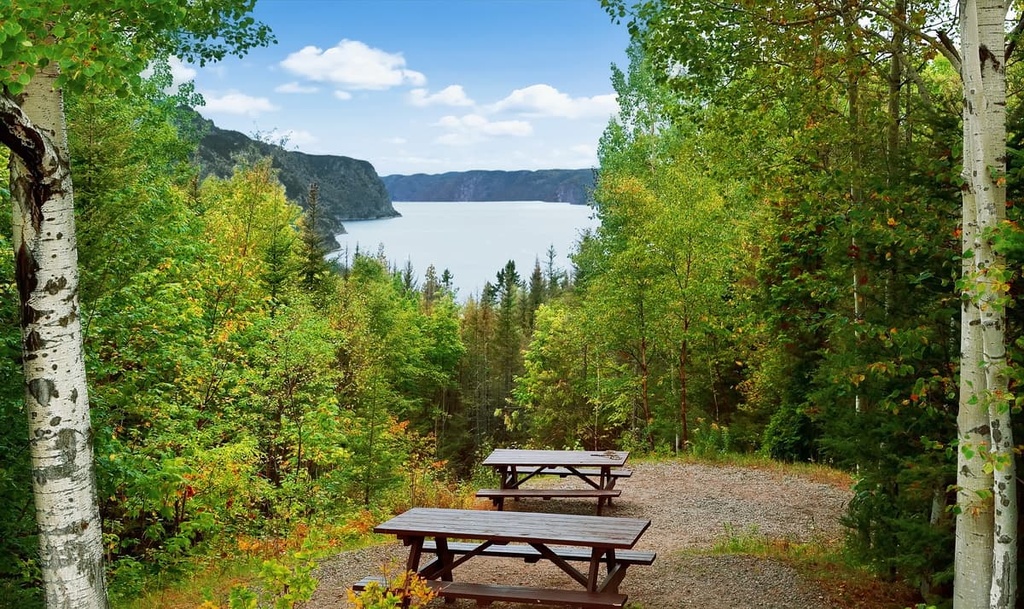
In the summer months, you must move your campsite daily. In the winter, you can set up a basecamp for no more than 3 nights at a time.
Check out the complete list of regulations for expeditionary travel for more information.
If you want to camp, but you don’t want to venture deep into the backcountry, there are 3 campgrounds in parc national du Fjord-du-Saguenay for you to choose from. These include:
Reservations are highly recommended for campers in the park. You can book sites online before your visit. Always double-check which amenities are provided in each campsite before you make a reservation.
For visitors that want to spend the night outside, but still want to enjoy some creature comforts, parc national du Fjord-du-Saguenay offers a number of so-called Ready-to-Camp sites that you can reserve.
There are 16 total Ready-to-Camp sites available at both Baie-Éternité and Le Bleuvet. Each Ready-to-Camp site features a large canvas tent that can accommodate up to 4 campers. They also come with everything you need to cook up a scrumptious meal, plus a fireplace and a picnic table.
There are also five Ready-to-Camp sites available at Pointe-du-Moulin Campground, but these are only accessible via hiking or biking. The total distance to these campsites is 2.3 km (1.4 mi), but you’ll need to bring all of your gear and any food or water you need for your stay.
All Ready-to-Camp sites must be booked in advance on the Sépaq website.
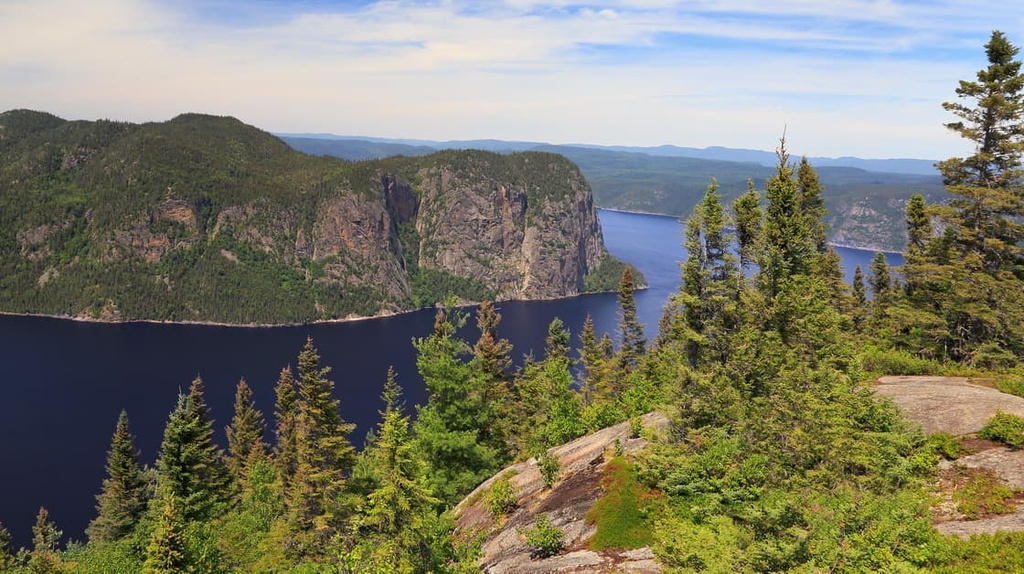
Parc national du Fjord-du-Saguenay also offers five Écho Cabins in the Rivière-Éternité sector for visitors to enjoy. These cabins offer additional comfort and amenities than the Ready-to-Camp sites, but they’re located in remote locales where you can make the most of your stay in nature.
The cabins in the park are all relatively new and they can accommodate up to 4 adult campers each plus up to 2 children under the age of 17. All of these cabins feature a clean, modern aesthetic with large windows, great natural lighting, and well-decorated interiors.
In each cabin, you’ll find hot and cold potable water; electricity; a refrigerator; a full kitchen with a stove, microwave and coffee maker; washroom and shower; indoor seating; and an outdoor firepit, barbecue, and picnic table with assorted Adirondack chairs.
Cabins in the national park must be booked in advance on the Sépaq website.
Anyone looking to visit Saguenay Fjord National Park is in for a real treat. But before you make your way to this magnificent outdoor recreation area, there are a few essential pieces of information that you ought to know. Here are some of the most important things to keep in mind before you leave home for your next trip to the park.
As is the case with most national parks of Quebec, visitors to Saguenay Fjord need to pay a fee to enter the park. You can either purchase a daily access pass (charged per person for adults over the age of 18) or you can get an annual pass.
Annual passes are available for either Saguenay Fjord or for all of the national parks of Quebec. Check out the park’s current entrance fees for the latest information.
Saguenay Fjord National Park is located in a remote part of Quebec. The park encompasses most of the coastline of Saguenay Fjord and it is located in the tourism regions of Côte-Nord, Charlevoix, and Saguenay–Lac-Saint-Jean.
Most visits to the park require a car, though driving from either Montreal or Quebec City is fairly straightforward. The southern part of the park is located about 519 km (322 mi) from Montreal and 272 km (168 mi) from Quebec City.

Like most national parks of Quebec, Saguenay Fjord is open all year-round. However, the park is located in an area that gets a substantial amount of snowfall and the park’s access roads generally close between October and May. The access road gates close with the first snowfall, so be sure to check the weather conditions if you’re heading to the park in October.
Visitors are still more than welcome to come to Saguenay Fjord during the winter, but they need to be prepared to be self-sufficient. No services are offered in the park during the winter season. If you visit during the winter, you also need to leave your vehicle at the main entrance station in Rivière-Éternité and hike into the park.
There are 5 information kiosks and visitors centers available in the park. These include:
The park’s information kiosks are primarily for purchasing entrance passes, fishing authorization permits, and for getting basic information from park rangers. If you want to learn more about the park or if you want to buy souvenirs, visit one of the two Discovery and Visitors Centres.
Each Discovery and Visitors Centre also offers basic food services as well as equipment rentals and guided excursions. However, all of the visitor centers and information kiosks are closed during the winter months. If you visit during the winter, you need to prepay your entrance pass online before you arrive in the park.
Looking for a place to stay near parc national du Fjord-du-Saguenay? Here are some of the best nearby cities and towns to check out:
The city of Saguenay is a community of approximately 150,000 residents located in the Saguenay–Lac-Saint-Jean region of Quebec. It is situated just to the west of the park along the Rivière Saguenay.
Due to the fact that it is one of the largest cities in the province to the north of Quebec City, Saguenay is an economic hub for the region. It has a rapidly growing research and educational industry, though manufacturing is still a major part of the city’s economy.
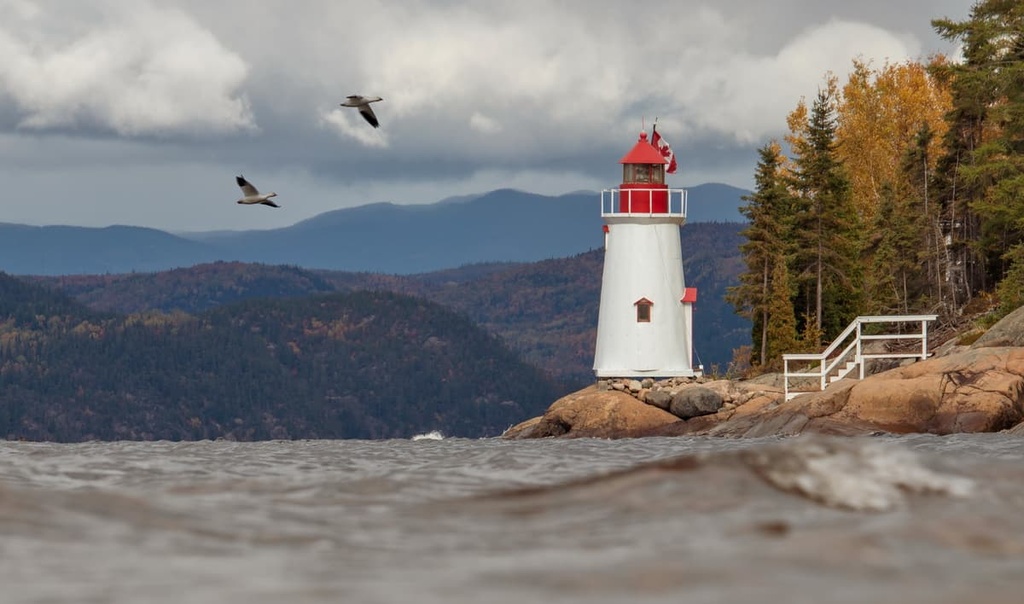
Additionally, Saguenay is a popular tourist destination, especially in the winter months due to the large number of ski resorts located near the city, such as Mont-Édouard–L'Anse-Saint-Jean. The city also hosts a number of events each year, including the Saguenay International Short Film Festival (REGARD - Festival international du court métrage au Saguenay).
Tadoussac is a small village located to the northeast of the park along the confluence of the Saint Lawrence and Saguenay Rivers. With nearly 800 residents, Tadoussac is one of the largest communities located near the eastern part of the park.
The community that is now Tadoussac is part of the traditional territory of the Innu First Nations and it was also frequented by Mi'kmaq First Nations for much of its pre-colonial history. Furthermore, Jacques Cartier, the French sailor, visited what is now Tadoussac in 1535 during his second voyage to what is now Canada.
Although Tadoussac is a small community, it is a popular tourist destination, thanks to its scenic surroundings. It is a particularly great place to go whale watching due to its proximity to both the Saint Lawrence and Saguenay rivers.
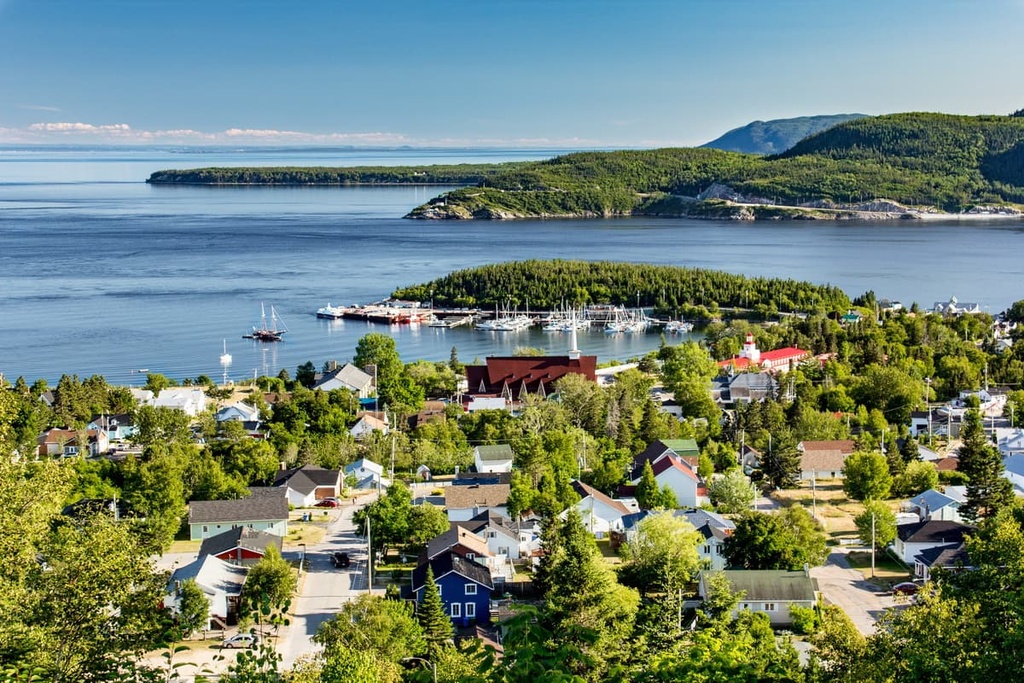
Quebec City (Ville de Québec) is the capital of the province of Quebec. The city is situated to the southeast of the national park along the banks of the Saint Lawrence River. It is home to approximately 530,000 residents, making it the second-largest city in the province after Montreal.
Of all the cities in the province, Quebec City is easily one of the most historic. The city is the only remaining urban area in the US or Canada with fortified city walls. It is also home to a large historic district that’s an official UNESCO World Heritage Site.
In addition to its historic architecture, Quebec City features a vibrant nightlife as well as plenty of great shops and restaurants. The city is also home to an international airport and it offers good transportation connections to both the rest of the province and eastern Canada.

Explore Parc national du Fjord-du-Saguenay with the PeakVisor 3D Map and identify its summits.








